One of the key elements that set RV camping apart from the regular style is having access to running water and a hot shower, and for most of us, it’s a dealbreaker.
The RV shower is a prized possession for anyone living on the road, but there’s a lot to these seemingly simple setups that first meets the eye.
How does an RV shower work? An RV shower is more compact than a regular one and it uses its own sewer system.
The freshwater used by the shower is stored in a holding tank located under the RV, and fed through a hose to the necessary fixtures and you can sometimes find them combined with the toilet to save space.
Keeping your RV’s shower in good condition is essential if you want to rely on it when you’re out in the middle of nowhere, and there’s a lot to learn about cleaning them, fixing problems, and choosing the right one for your motorhome.
This guide will walk you through the basics to ensure you never have to go without a functioning and revitalizing RV shower.
Contents
The Types of RV Showers

There are two key types of showers you can expect to find on board an RV: the wet bath and the dry bath.
These names are slightly deceptive as they’re actually showers and not baths, but the wet and dry distinction is how you tell them apart.
A wet bath is where all parts of the bathroom are joined together and housed in a waterproof room. In here, you’ll find the sink, toilet, and shower, with a drain at the bottom, so it’s not the most glamorous setup.
The dry bath setup is where the shower is stored separately in a cubicle and away from the rest of the bathroom, much like you’d have at home.
The benefit to this is that you can enjoy your shower, toilet, and sink, all as separate amenities, however, because they’re spread out, the shower itself will be a lot smaller.
Common Features of an RV Shower
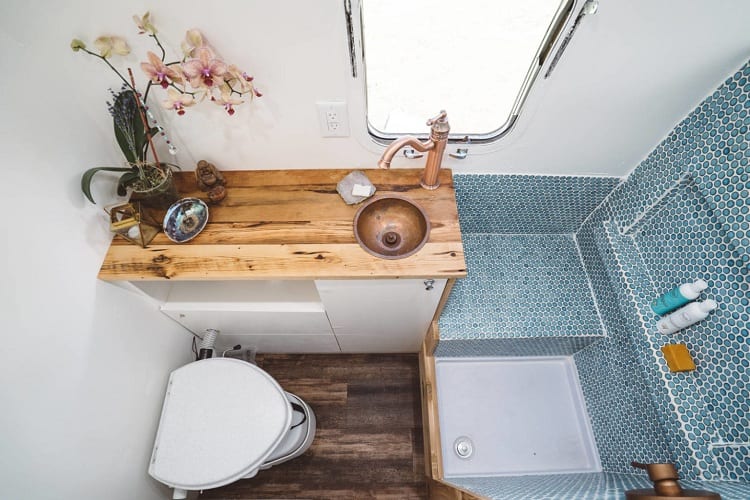
No matter the type of RV shower you have, they’re guaranteed to have a few features in common.
Therefore, learning the basics of how these showers work will show you what’s possible, and not, so you can develop an efficient bathing routine on the road.
- The water supply for the shower comes from the freshwater tank, so you’re usually running on a limited supply unless you have a hookup.
- All of the waste water that goes down the drain will be stored in your gray water tank, so this is another space issue you need to be mindful of.
- The amount of hot water you have to use will be further limited to what’s in your hot water tank, and considering most of them max out at around 10 gallons, you’ll have to ration.
- Space-wise, the area you have to shower in will be a lot smaller than what you’re used to at home, so there’ll be some maneuvering to get everything clean.
Best Shower Heads for RV Use
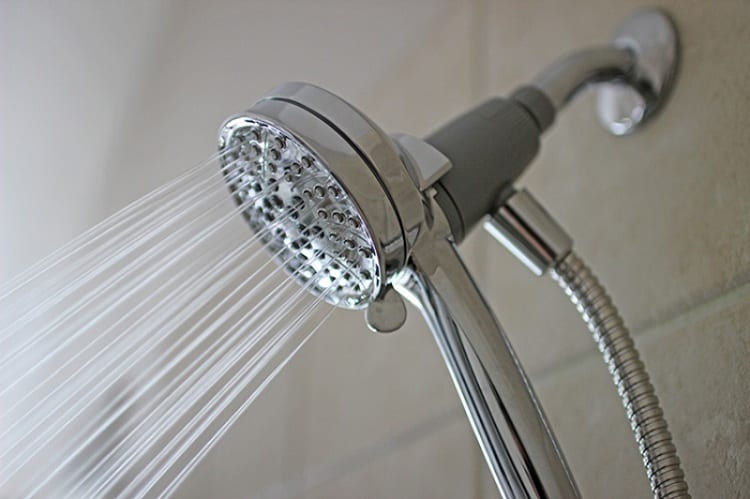
The key to a good shower is in its showerhead, and this is true even when you’re dealing with a compact but efficient RV one.
Although you can attach a regular showerhead like your home bathroom, it’s not the best idea as far as water conservation is concerned, so consider these features when you’re buying an RV-specific model.
- Handheld design: Although not essential, most RVers will tell you that having a handheld showerhead is the only way to go. This allows you to save water by only washing what’s needed and getting into the hard-to-reach spaces while you’re in a cramped space.
- On/off switch: With a toggle to turn the shower head’s water flow on and off, you can make sure you never waste a drop. These are easier and faster to turn off than the faucet and make less of a mess in the process.
- Water pressure: Most shower heads should come with a water pressure rating that should indicate their strength. However, a common misconception about these is that a low flow rate equals low pressure, which is untrue as there are many heads that add water into the stream that makes it stronger and more enjoyable to use.
- Gallons per minute: This might be referred to as GPM and it shows you how much water you can expect to use in a minute of showering. For efficiency, you should look for a head with a 2.0 GPM, however slightly over this is okay as long as you have other conservation methods in place.
- Materials: RV showerheads range in materials from a basic and inexpensive plastic type to something that uses brushed nickel or chrome, just like you’d have at home. Although it might not affect the water pressure, it could impact longevity, so think about this when you’re making your choice.
- Budget: As far as RV accessories go, the showerhead is a pretty cheap one, even when you splurge for something top of the range. The budget-friendly options are around $20 and they range up to a couple of hundred dollars, so there’s a lot to choose from.
How to Clean Your Shower
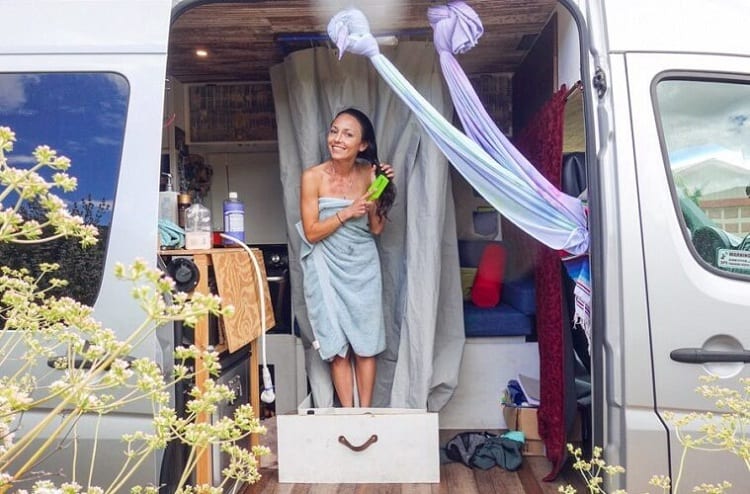
The key to keeping an RV shower clean is regular maintenance and deeper cleans every now and then.
Their unique construction and position mean they need slightly more attention than the shower at home, but it’s not hard.
To keep your RV shower clean, you’ll want to squeegee down the sides and floor after every use, so get a shower-sized one to keep on hand.
Removing this excess moisture will prevent mold and grime from building up which means less in-between cleaning and a fresh bathroom for whoever is using it next.
When it’s time to do deeper, you can use the regular household shower cleaning products from home, but the cleaning cloth needs to be gentle.
Some people find a dryer sheet or microfiber cloth is the best type of material as it won’t scratch but still lets you work the cleaning agent deeply into the shower surface. After that, wash it all off and down the drain, just like you do at home.
Troubleshooting RV Shower Issues
In addition to regular cleaning, you’ll likely need to tend to some ongoing maintenance and repairs for your RV shower.
There are some common problems that almost everyone deals with in their motorhome, and thankfully, most have an easy fix.
Problem: Leaking Faucets
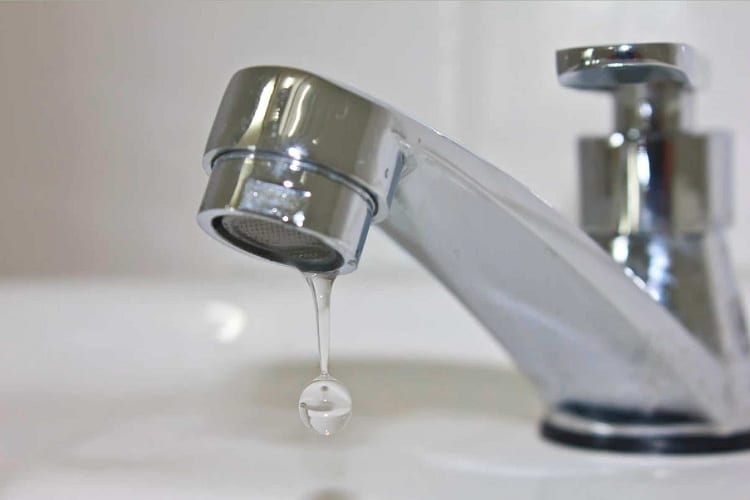
If you notice water leaking from the faucets of the shower and not the showerhead itself, you’ll want to fix it as quickly as possible.
This leaking water will be stealing from your precious freshwater supply, and potentially spreading beyond the shower cubicle and doing damage.
If you don’t have a faucet repair kit on board, you will need to replace the faucet altogether or find a professional who does. For this reason, many campers keep either one of these as a backup in case this happens.
Otherwise, if you’re really handy, you can change the fittings on the faucet and see if tightening this does anything.
Problem: Cracked Floor
Due to the plastic or acrylic materials used to make most RV shower cubicles, it’s common to find a crack develop after a few years of solid use.
Unfortunately, you can’t just ignore this problem as the water can leak through to underneath and do a lot more damage.
To fix it, make sure you always have a repair kit ready so you can patch up the hole and keep it waterproofed.
These are simple patches that can be cut down to size and stuck on, just until you’re able to replace the floor or get it fixed professionally.
Problem: Broken Shower Vacuum Breaker
The easiest way to tell if the shower vacuum breaker has broken is to look for leaking water coming out of it.
This small plastic part is found where the water flows from the pipe to the sink, and once it breaks, it will need to be replaced completely.
Some people have no issue replacing this part themselves, as long as they follow the strict instructions that come with the part.
However, you’ll want to keep a replacement on board in case this happens or be close by to a retailer who stocks it.
To find out the specific type of breaker, check the owner’s manual of your RV.
Problem: Shower Not Draining
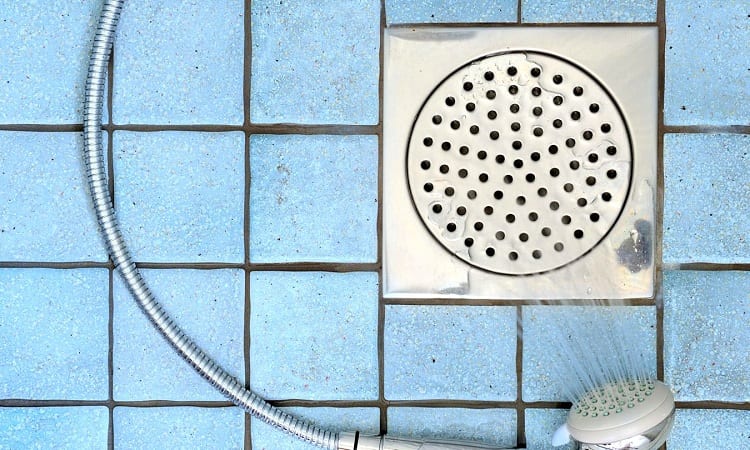
If you notice that the water doesn’t seem to be moving down the drain and out of the shower, there’s usually a problem.
The first place to check is the gray water tank, as if it hasn’t been emptied recently, it could be overfilled and might lead to a disastrous overflowing event.
However, if the gray water tank is fine, you probably have a clog in the pipes.
You’ll need to check the sewer pipe that leads from the shower to the gray water tank and use a dedicated unclogging tool or product to clear it out.
Once done, test it out to see if water flows through it before reconnecting.
Problem: Water Not Flowing From Shower
Sometimes you might turn on the faucet of the shower and find nothing, or very little, coming out.
This less than ideal situation can usually be fixed pretty easily, especially if it’s just a matter of filling up the freshwater holding tank.
If this isn’t the cause, you’ll need to check the water lines that move the water from the tank to the showerhead. Sometimes, it could be a simple loose connection that you can screw back on and seal it up.
However, a minuscule crack could cause water to leak out and not reach its final destination, and if you find one of these, it’ll need to be patched up and repaired immediately.
Keeping Clean on the Move
A good RV owner should understand the inner workings of everything on board, including their showers.
With some insight into keeping them clean, fixing common issues, and knowing how to find the right one when it’s time for an upgrade, you’ll ensure you never go without this essential luxury again.
Related Questions
An RV shower is a basic requirement for many campers, but with so many styles and specifications out there, choosing one can be overwhelming.
We’ve answered some FAQs about how these onboard baths work so you’ll have all of the knowledge you need to proceed.
How Many RV Showers Can You Have?
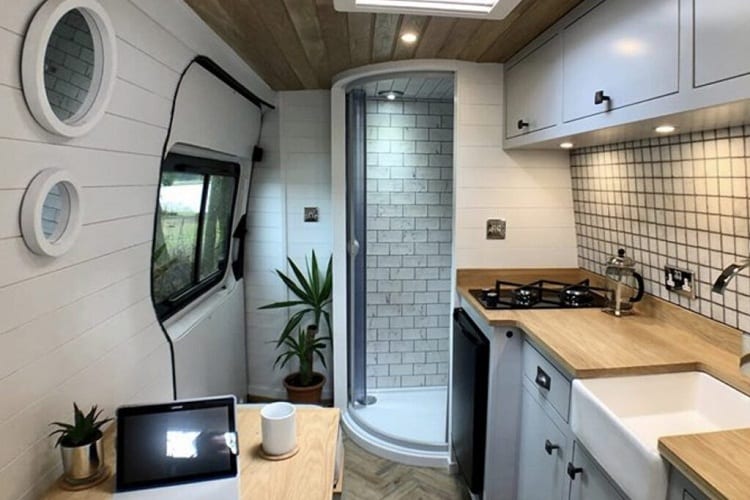
The number of showers possible in an RV will depend on the size of the tank, how long you shower for, and what pressure the showerhead uses.
A larger 120-gallon tank would allow for around 10 showers, and sometimes more if you’re careful with time, so consider the needs of your RV guests and plan around it.
Can You Use a Regular Shower Head in an RV?
Although it is possible to attach a regular shower head to your RV shower, it’s not the most water-efficient approach.
You should purchase an RV or motorhome-specific showerhead that’s compact and lower pressure to suit the unique requirements of this setup and to allow for better water conservation.
What Materials Are RV Showers Made Of?
The shower onboard an RV is designed for safety and stability, so you’ll usually find some sort of non-skid material like acrylic or fiberglass on their floor’s surface.
The downside to these materials is that they’re prone to cracking over time, and if this happens, they need to be fixed immediately otherwise they can damage the floor structure underneath.
Resources:


